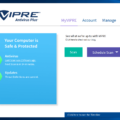Attack surface analysis is an important part of any security strategy for businesses and organizations. It involves assessing the attack vectors, or points of entry, that a malicious actor might use to gain access to confidential information or resources on a network. Attack surface analysis helps identify and prioritize areas of vulnerability in order to reduce the risk of attack and protect against data breaches.
At its core, attack surface analysis is about understanding the different ways an attacker could gain access to your systems, networks, and applications. This includes identifying potential weaknesses such as unpatched software, weak passwords, open ports, or exposed credentials. By understanding these attack vectors and evaluating their risk level, organizations can create a more secure environment by reducing their attack surface and mitigating potential threats.
The first step in any attack surface analysis is to identify all the potential points of entry for an attacker. This includes both digital and physical components such as workstations, file servers, firewalls, switches, printers, and mobile devices. It’s important to understand what data is stored on each device in order to determine which areas are most vulnerable to attack. Once all possible points of entry have been identified, it’s time to assess each one in terms of its risk level.
An effective way of doing this is through threat modeling – an approach that involves identifying threats to the system or application and analyzing how they may be exploited based on their potential impact and likelihood of occurring. During this process, security experts will consider factors such as the system architecture, authentication protocols used by users and administrators, software versions used on servers and workstations, etc., in order to identify weaknesses in the system that could be exploited by attackers.
Once all possible threats have been identified it’s time to prioritize them according to their risk level so that countermeasures can be put in place accordingly. This could involve implementing stronger authentication protocols or implementing two-factor authentication for sensitive data access; installing patches for vulnerable software; restricting access privileges; introducing antivirus protection; performing regular penetration testing etc., In addition, monitoring should also be put in place so that any suspicious activity can be quickly detected before it turns into a major incident.
Attack surface analysis is a vital component of any security strategy as it provides insight into where your organization may be vulnerable so that you can take proactive steps toward protecting your IT infrastructure from malicious attacks. By regularly assessing your attack surface you can stay one step ahead when it comes to protecting your business from cyber-attacks

Examples of Attack Surfaces
Attack surfaces are the various points of entry that attackers can exploit when attempting to breach a system. They can range from physical access points, such as unlocked doors or unmonitored windows, to software vulnerabilities, such as unpatched programs or default configurations. Examples of attack surfaces include:
1. Workstations and laptops: Attackers can gain access to workstations and laptops through weak passwords, insecure networks, malicious applications or plug-ins, and other software vulnerabilities.
2. Network file servers: Attackers can gain access to network file servers through weak authentication protocols, insecure remote access tools, unpatched operating systems, or other software vulnerabilities.
3. Network application servers: Attackers can gain access to application servers through weak authentication protocols, insecure remote access tools, unpatched operating systems, or other software vulnerabilities.
4. Corporate firewalls and switches: Attackers can gain access to corporate firewalls and switches by exploiting misconfigurations in firewall rulesets or by taking advantage of known vulnerabilities such as those found in outdated software versions.
5. Multi-function printers: Attackers can take advantage of vulnerable services running on multi-function printers such as web-based management interfaces or insecure protocols like Telnet or FTP.
6. Mobile devices: Attackers can gain access to mobile devices through weak authentication protocols, malicious applications and plug-ins, insecure Wi-Fi networks, jailbroken devices that allow unauthorized applications to run on them, and other software vulnerabilities.
Understanding the Attack Surface
The attack surface is the set of potential points of entry into a system, system element, or environment. It is where an attacker can try to gain access, interfere with, or extract data from that system, system element, or environment. Examples include network protocols, open ports and services, authentication mechanisms, software, and hardware components. The larger the attack surface, the greater the chances that an attacker can find a way to infiltrate the system. Reducing the attack surface is therefore important in improving security and reducing risks.
The Importance of Understanding Attack Surface
Attack surface management is an important practice for businesses to secure their machines and systems. It provides a comprehensive approach to evaluating, managing, and reducing the attack surface of an organization’s systems and networks. Attack surface management allows organizations to identify potential attack vectors before malicious actors can exploit them, thereby reducing the risk of a successful cyberattack.
An attack surface is the sum total of all the different ways an attacker can target an organization’s systems or data. Attackers scan for vulnerabilities in applications, services, networks, and users to try and gain access to your data or system. By understanding and reducing your attack surface, you can minimize the chances that malicious actors will be able to exploit those weaknesses.
The importance of attack surface management lies in its ability to identify potential weak points before attackers do. It also helps organizations prioritize security resources based on potential risk levels. By understanding where attackers might be able to gain access to your system or data, you can take steps to limit their ability to do so. This includes patching known vulnerabilities, limiting user privileges, strengthening authentication protocols, deploying firewalls or other security tools, and more.
Ultimately, attack surface management is an essential practice that should be employed by all organizations in order to protect their systems from malicious attempts at gaining access or compromising data. It is a proactive approach that allows organizations to stay ahead of attackers by identifying potential weaknesses before they are exploited—thus helping them reduce their overall risk profile and protect themselves from costly cyberattacks.
Reducing Attack Surface Through Techniques
Attack surface reduction is a security technique that involves reducing the potential attack vectors that could be used by an attacker to gain access to a system or data. This can be achieved through various methods such as network segmentation, application whitelisting, restrictive user access policies, and limiting exposed services. Network segmentation reduces the attack surface by separating networks into smaller segments, allowing for more granular control over which systems can communicate with each other and providing an additional layer of security. Application whitelisting restricts the applications users are allowed to install and run on their systems, making it harder for malicious software to be installed or executed. Restrictive user access policies limit the privileges granted to users, ensuring they can only access resources they need for their tasks. Finally, limiting exposed services ensures that attackers cannot exploit any unpatched vulnerabilities in those services.
Conclusion
Attack surface analysis is an essential security measure for organizations of all sizes. It allows organizations to identify and monitor potential attack vectors that can be used by malicious actors to gain access to confidential information or manipulate networks or computer systems. By identifying and addressing these attack vectors, organizations can greatly reduce the risk of falling victim to a data breach or other cyberattacks. With the right tools and processes in place, organizations can continuously monitor their attack surface and adjust their security posture as needed. Ultimately, attack surface analysis is an important part of any comprehensive cybersecurity strategy.








